Related Research Articles
The Situationist International (SI) was an international organization of social revolutionaries made up of avant-garde artists, intellectuals, and political theorists. It was prominent in Europe from its formation in 1957 to its dissolution in 1972. The intellectual foundations of the Situationist International were derived primarily from Libertarian Marxism and the avant-garde art movements of the early 20th century, particularly Dada and Surrealism. Overall, situationist theory represented an attempt to synthesize this diverse field of theoretical disciplines into a modern and comprehensive critique of mid-20th century advanced capitalism.
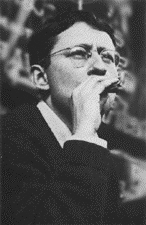
Guy Louis Debord was a French Marxist theorist, philosopher, filmmaker, member of the Letterist International, founder of a Letterist faction, and founding member of the Situationist International. He was also briefly a member of Socialisme ou Barbarie.
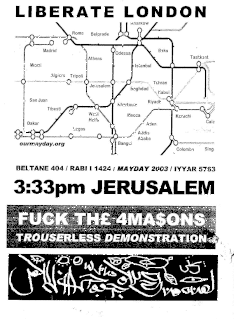
Psychogeography is an exploration of urban environments that emphasizes playfulness and "drifting". It has links to the Lettrist and Situationist Internationals, revolutionary groups influenced by Marxist and anarchist theory, and the attitudes and methods of Dadaists and Surrealists. In 1955, Guy Debord defined psychogeography as "the study of the precise laws and specific effects of the geographical environment, consciously organized or not, on the emotions and behavior of individuals." As a practice and theory, psychogeography has influenced a broad set of cultural actors, including artists, activists and academics.
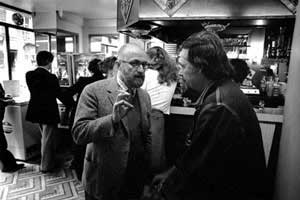
Pierre Alechinsky is a Belgian artist. He has lived and worked in France since 1951. His work is related to tachisme, abstract expressionism, and lyrical abstraction.

Constant Anton Nieuwenhuys, better known as Constant, was a Dutch painter, sculptor, graphic artist, author and musician.

The State and Revolution (1917) is a book by Vladimir Lenin describing the role of the state in society, the necessity of proletarian revolution, and the theoretic inadequacies of social democracy in achieving revolution to establish the dictatorship of the proletariat.

Henri Lefebvre was a French Marxist philosopher and sociologist, best known for pioneering the critique of everyday life, for introducing the concepts of the right to the city and the production of social space, and for his work on dialectics, alienation, and criticism of Stalinism, existentialism, and structuralism. In his prolific career, Lefebvre wrote more than sixty books and three hundred articles. He founded or took part in the founding of several intellectual and academic journals such as Philosophies, La Revue Marxiste, Arguments, Socialisme ou Barbarie, Espaces et Sociétés.

A megastructure is a very large artificial object, although the limits of precisely how large vary considerably. Some apply the term to any especially large or tall building. Some sources define a megastructure as an enormous self-supporting artificial construct. The products of megascale engineering or astroengineering are megastructures. The lower bound of megastructural engineering might be considered any structure that has any single dimension 1 megameter (1000 km) in length.
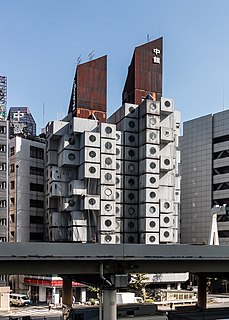
Metabolism was a post-war Japanese architectural movement that fused ideas about architectural megastructures with those of organic biological growth. It had its first international exposure during CIAM's 1959 meeting and its ideas were tentatively tested by students from Kenzo Tange's MIT studio.

Homo Ludens is a book originally published in Dutch in 1938 by Dutch historian and cultural theorist Johan Huizinga. It discusses the importance of the play element of culture and society. Huizinga suggests that play is primary to and a necessary condition of the generation of culture. The Latin word ludens is the present active participle of the verb ludere, which itself is cognate with the noun ludus. Ludus has no direct equivalent in English, as it simultaneously refers to sport, play, school, and practice.
Heim theory, first proposed by German physicist Burkhard Heim publicly in 1957, is an attempt to develop a theory of everything in theoretical physics. The theory has received little attention in the scientific literature and is regarded as being outside mainstream science but has attracted some interest in popular and fringe media.
Anti-art is a loosely used term applied to an array of concepts and attitudes that reject prior definitions of art and question art in general. Somewhat paradoxically, anti-art tends to conduct this questioning and rejection from the vantage point of art. The term is associated with the Dada movement and is generally accepted as attributable to Marcel Duchamp pre-World War I around 1914, when he began to use found objects as art. It was used to describe revolutionary forms of art. The term was used later by the Conceptual artists of the 1960s to describe the work of those who claimed to have retired altogether from the practice of art, from the production of works which could be sold.
Unitary urbanism (UU) was the critique of status quo "urbanism", employed by the Letterist International and then further developed by the Situationist International between 1953 and 1960.

Mark Antony Wigley is a New Zealand-born architect, author, and Dean of Columbia University's Graduate School of Architecture, Planning and Preservation, New York City, United States.
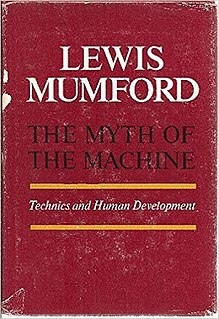
The Myth of the Machine is a two-volume book taking an in-depth look at the forces that have shaped modern technology since prehistoric times. The first volume, Technics and Human Development, was published in 1967, followed by the second volume, The Pentagon of Power, in 1970. The author, Lewis Mumford, shows the parallel developments between human tools and social organization mainly through language and rituals. It is considered a synthesis of many theories Mumford developed throughout his prolific writing career. Volume 2 was a Book-of-the-Month Club selection.
Urban Interventionism is a name sometimes given to a number of different kinds of activist design and art practices, art that typically responds to the social community, locational identity, the built environment, and public places. The goals are often to create new awareness of social issues, and to stimulate community involvement. Such practices have a history that includes certain street artists of the 1960s, such as The Diggers of San Francisco, or the Provos of Amsterdam, among many others.
Yona Friedman was a Hungarian-born French architect, urban planner and designer. He was influential in the late 1950s and early 1960s, best known for his theory of "mobile architecture".
Free association, also known as free association of producers, is a relationship among individuals where there is no state, social class, hierarchy, or private ownership of means of production. Once private property is abolished, individuals are no longer deprived of access to means of production, thus enabling them to freely associate without social constraint to produce and reproduce their own conditions of existence and fulfill their individual and creative needs and desires. The term is used by anarchists and Marxists and is often considered a defining feature of a fully developed communist society.
A social space is physical or virtual space such as a social center, online social media, or other gathering place where people gather and interact. Some social spaces such as town squares or parks are public places; others such as pubs, websites, or shopping malls are privately owned and regulated.

The Isin-Larsa period is a phase in the history of ancient Mesopotamia, which extends between the end of the Third Dynasty of Ur and the conquest of Mesopotamia by King Hammurabi of Babylon leading to the creation of the First Babylonian dynasty. According to the approximate conventional dating, this period begins in 2025 BCE and ended in 1763 BCE. It constitutes the first part of the Old Babylonian period, the second part being the period of domination of the first dynasty of Babylon, which ends with the Sack of Babylon in 1595 BCE and the rise of the Kassites.
References
- Constant Nieuwenhuys (1953) For an Architecture of Situation